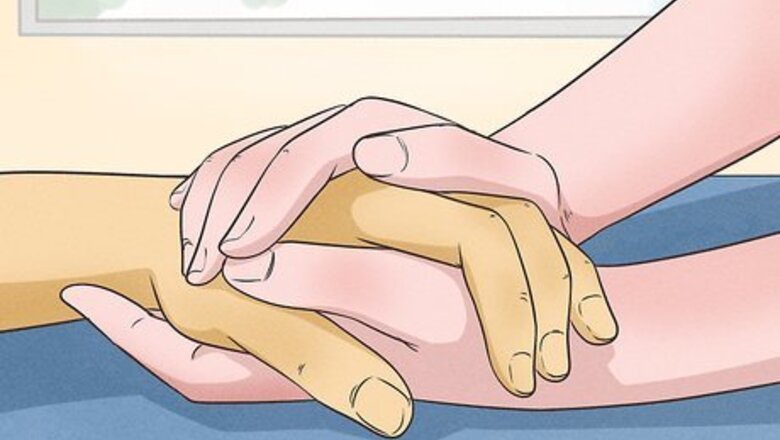
views
Rediscovering Yourself after a Breakup
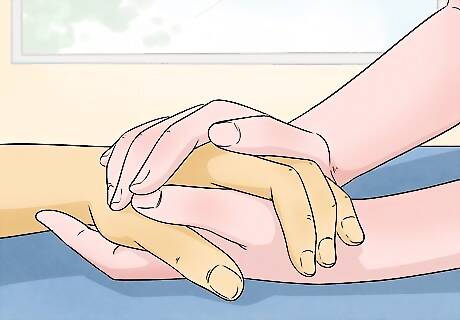
Allow yourself to grieve. In order to find yourself again after a breakup, you have to first let go both of the person you were during the relationship and of the relationship itself. Give yourself the time you need to grieve. There’s no actual way to circumvent the grieving process. You can try to shove your feelings aside and avoid them, but they always get out eventually. Bottling up your feelings and refusing to deal with them not only prevents you from moving on but makes those feelings more devastating when they make their way to the surface (and they always will).

Do what you want to do. Part of rediscovering yourself after the end of a relationship is remembering the things you--just you--like to do. Reconnect with yourself by doing what you enjoy, whether it’s going for a run, taking a long bath, watching terrible TV, etc. But don’t let “doing what you want” turn into wallowing. Don’t use it to avoid dealing with feelings or to hide from the world--that will just keep you stuck where you are rather than help you get where you want to go. Instead, give yourself the time you need to recover--it may be a few days or a few weeks--but be honest with yourself about when it’s time to start moving forward again. Don’t get stuck.
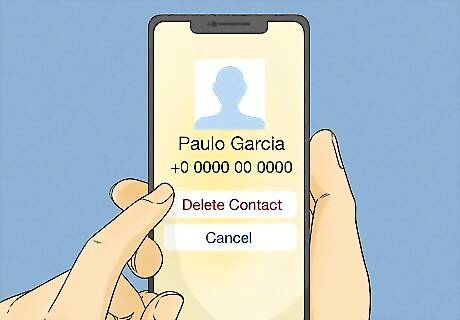
Cut off communication with your ex. If you and your ex-partner are on good terms, you don’t have to cut them out of your life permanently, but you will need to cut them off temporarily (at least a few months) while you work on yourself. If the relationship ended badly and having contact with your ex only dredges up painful memories, cutting off communication will allow you to start to heal. Even if the relationship didn’t end badly, you need to spend time with yourself, completely apart from an ex-partner. Otherwise you won’t really be spending time with who you are; instead, you’ll be constantly reminded of who you used to be.

Freewrite. If you find yourself feeling overwhelmed with thoughts and emotions, try freewriting as a way to get yourself back on track. Freewriting involves sitting down and writing out whatever comes to mind, stream-of-consciousness style. Don’t try to censor what comes out or make it sound nice--or even grammatical. Decide a specific amount of time to spend freewriting--maybe 5 minutes, 10 minutes, or 15 minutes--and write without stopping. Freewriting gives you a chance to vent your thoughts and feelings without trying to make sense of them first, which is what can lead to feeling overwhelmed. Freewriting also lets you get perspective on thoughts and feelings that may otherwise feel all-consuming.

Don’t distract yourself. We often lose touch with ourselves when we allow other people and things to distract us. Spend some time being quiet with yourself, free of other distractions. It may sound simple, but if you want to get back in touch with who you are, you’re going to first have to stop avoiding yourself. Start spending time with yourself by keeping your attention on what you’re doing in the moment. If you’re cleaning the bathroom, clean the bathroom. Don’t play music or leave the TV on or do anything else that will take you outside of yourself. It may initially be uncomfortable, particularly if you’re a person who’s in the habit of distracting themselves whenever possible. Usually, those distractions are meant to keep you from being inside your own head, feeling lonely, feeling vulnerable, feeling sad, etc. Rather than trying to distract yourself from whatever you’re feeling, just acknowledge the feeling and let it be. When you stop fighting it, the feeling usually resolves itself in time.
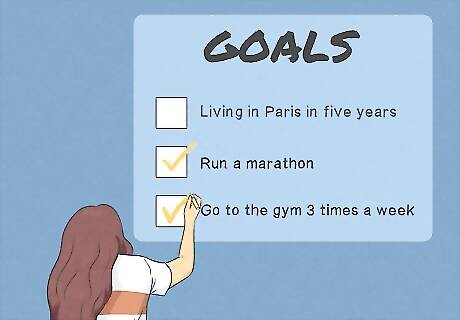
Set goals. At a time when you feel lost and without direction, it’s particularly important to set goals that will give you a sense of direction and purpose. For your larger goals, think about where you want to be in a year and in five years. Set up goals accordingly and write them down--writing them down puts them into a tangible form you can come back to and remind yourself of each day. For example, if you want to be living in Paris in five years or to have won a marathon, write it down. Make it part of your daily check-in with yourself and actively pursue opportunities that can help you advance towards that goal. For your shorter goals, choose things that are achievable as well as important. You might, for example, set a short-term goal of going to the gym 3 times a week for a month or meditating twice a week for six weeks. Meeting short-term goals will give you the sense of progress and accomplishment you’ll need to continue improving and moving forward.

Embrace good relationships and distance yourself from bad ones. When trying to rediscover yourself, it helps to have positive, loving, and supportive people around you. Distance yourself from any negative relationships, whether it be a friend or partner who needs to be convinced in order to love and support you or a family member who continually criticizes you. Those relationships will only set you back. If there’s a negative person in your life whom you can’t avoid, like a boss, co-worker, or close family member, work on distancing yourself mentally and emotionally rather than physically. Resolve not to engage them and to recognize any negativity they direct at you as a reflection of their own shortcomings rather than of yours. Seek out people who love and accept you as you are and are willing to support you. Spend time with the people who make you feel energized and who help you feel more in touch with who you really are.

Embrace your present. As you learn to focus on the current moment rather than dwell on painful memories or distract yourself from your own feelings, you’ll realize that past moments don’t have to define you. What’s in the past only defines what you want it to, so allow yourself to keep what’s past in the past and value yourself for who you are and who you’re becoming in the present moment.
Rediscovering Yourself if it Feels Like Part of You is Missing
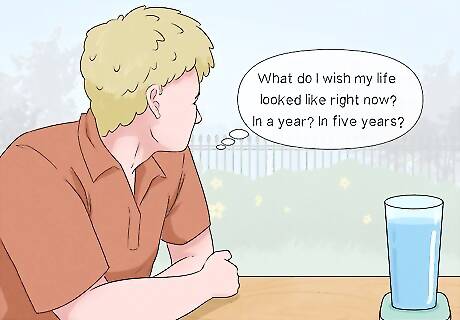
Take stock of what feels to be missing. Take time to reflect on what part of you seems to be missing and on what might have contributed towards your losing it. Helpful questions to think about--or, even better, write about--include: Who am I currently? Do I like who I am? What part of myself seems to be missing? When did it go missing? Why did it go missing? What am I longing for? What were my dreams when I was younger? What were my passions? What do I wish my life looked like right now? In a year? In five years? What are my values? What do I cherish most? What makes me feel happy and satisfied? Use your answers to these questions to help you figure out where things aren’t working well for you in your life. For example, if your values are courage, honesty, and kindness but you find yourself in a job or surrounded by people who value money and success at any cost, the conflict between what you value and what you’re surrounded by may be part of what’s making you feel alienated from your true self.

Look closely at the people and events that may have contributed to losing part of yourself. Sit down and go carefully through your memories, looking for what may have led you to abandon a part of yourself. For example, were you forced to abandon the imaginative part of yourself when, as a child, your parents insisted your fantasies and daydreams were useless? Think about anything that had a strong physical, mental, or emotional impact on you. Begin with the major ones that come most easily to mind, then move on to smaller, less expected ones. Factors to consider include: Particular events (both positive and negative) Personal relationships (friends, family, partners) Jobs you’ve held Life transitions Accidents Medical issues Childhood memories (both positive and negative) Loss Being forced into an uncomfortable role Being forced to lie to or about yourself Remember that the point of this reflection isn’t so you can blame past people or events; rather, it’s to allow you to understand how and why you lost a part of yourself so you can start working to get it back.

Begin a mindfulness routine. When it feels like part of you is missing, mindfulness practices help you reconnect with your center. Practices like meditation, yoga, and tai chi are all good options for practicing mindfulness and connecting with who you are at a deeper level.

Spend time with yourself. It can be easy to lose track of yourself when you avoid spending time in your own head. It’s tempting to drown out potentially troubling thoughts or emotions by never setting aside time to simply be quiet, without music playing, without other people around, without a book, without the internet, etc. If you want to reconnect with yourself, you’re going to need to stop avoiding your own mind and feelings. Granted, it will probably be uncomfortable at first to sit down quietly and just be with yourself for a while. It might bring up thoughts or feelings you’ve been trying to avoid, but once you acknowledge them and stop trying to run away from them, they suddenly become much more manageable and less intimidating. Take 5-10 minutes each day to just sit quietly. It might be on your living room couch, on a rocking chair on your front porch, or underneath your favorite tree. Wherever it is, start to reconnect with yourself and to enjoy your own company.
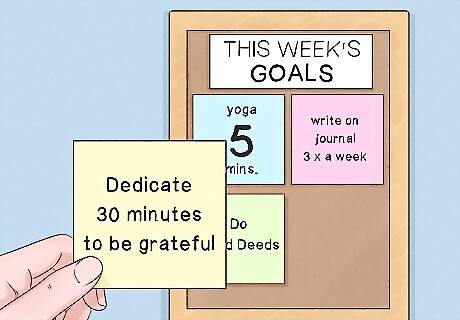
Set goals. When you set goals for yourself that you truly want to accomplish--rather than having goals set for you by others--you feel more connected to yourself and more fulfilled in your life. Set both long- and short-term goals. For long-term goals, think about how you want to be in a year from now or in five years from now. Do you want to be more forgiving of yourself and others? Make that a long-term goal. Do you want to feel satisfied with your life and work? Make that a long-term goal. Use short-term goals to help you work towards your longer-term goals and to help you feel a sense of accomplishment and progress. Set achievable goals that will help you get closer to meeting your long-term goals. If, for example, your long-term goal is to feel calm and at peace, set achievable short-term goals that will help get you there, like meditating four times a week for a month or writing in a journal three times a week for two months. Write down your goals and place them somewhere you’ll see them every day so you’ll be reminded of what it is you’re working toward.
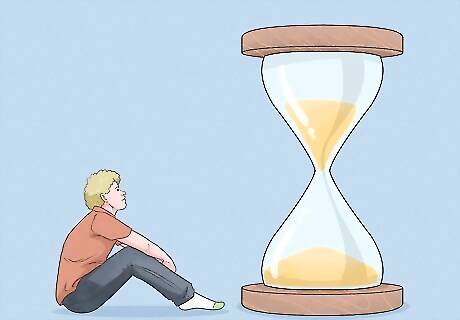
Be patient. The work of reflecting on and rediscovering lost parts of yourself can be challenging and time-consuming. Don’t be discouraged if you don’t have an immediate revelation. Be patient with yourself and allow yourself to be curious without feeling like you to have to find a particular answer. Understand that rediscovering and reclaiming a lost part of yourself is an ongoing process that you work on each day--it doesn’t happen all at once.
Rediscovering Yourself if You Feel Inauthentic

Think back to a time when you felt happy and like “yourself.” Remember key moments when you felt happy and thriving--what were those moments like and what aspects do they share? Pursue things and activities that connect you back to those times when you felt vibrant and fulfilled.

Pay attention to what sparks your interest. As you go through your day, pay close attention to the things that make you perk up or spark your interest. When you pursue things that you truly enjoy--rather than things you have to do--you feel more connected to yourself and more fulfilled in your activities. You may find yourself particularly drawn to and inspired by the times you get to use your creativity when writing emails or thoughts in a journal. Or you might find that your interest always piques when hearing someone talk about quantum physics on the TV or radio. Whatever it is that draws your interest, note it down and make a point of pursuing it later. Check out books on the topic, research it online, watch a documentary, etc.

Notice the things that upset you. Try to look beyond minor irritations or pet peeves like traffic or people who talk during movies--pay attention to the things that consistently evoke more than passing irritation. You’ll likely notice a common thread between the things that tend to elicit such negative emotions, and you can use that knowledge to narrow down what’s at the root of your discontent. If, for example, you find that you get upset when people are hurtful to others, you might take from that that you need kind and caring people around you to thrive and/or that helping people might be a fulfilling activity for you. Or if you find that you become irritable if you’ve gone some time without having a creative outlet (singing, dancing, writing, drawing, etc.), you might conclude that you need to have a consistent creative outlet in your life to feel satisfied. Also bear in mind that we often judge others most harshly based on the things we ourselves are insecure about. If you tend to judge people who drive luxury cars as being superficial and wasteful, think about your own insecurities and vulnerabilities around being proud, showy, or extravagant. What issues do those things raise for you and why?

Notice when you’re feeling inauthentic. Pay attention to the times when you get the uncomfortable feeling of being inauthentic, whether it’s in what you’re saying, doing, or thinking. Make a mental, or even better, a physical, note of what you’re doing that feels inauthentic. Then think carefully about what fears and anxieties are motivating that behavior. What’s driving the inauthentic behavior? Is it fear of rejection? Boredom with the people around you? Feeling unappreciated? Think about ways you can circumvent the beliefs or anxieties driving you to be inauthentic. If it’s a fear of rejection, for example, work on really accepting and appreciating yourself for who you are. When you truly accept yourself, you won’t be driven by a fear of others’ rejection and can start to be more authentic around others.
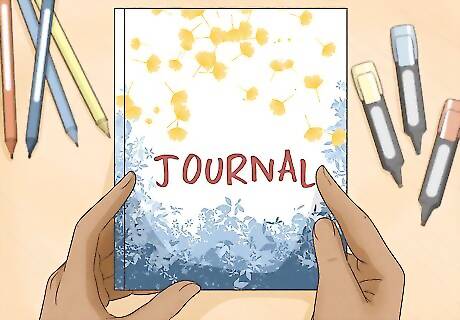
Keep a journal. Writing in a journal gives you an opportunity to reflect inwardly and to keep a record of those reflections so that you can notice important recurring themes. Write anything you like in your journal. Be sure to give a bit of space each time to thinking about what it is you wish you had more of in your life, whether that be time with family or more opportunities to paint. Try to write in the journal on a regular basis. The more regularly you write in the journal, the easier it will be to eventually find common themes and insights. Once you’ve built up a number of entries, look back over them and consider whether there are any commonalities in the things you wish you could do more often, in the things that bother you, etc. Work on trying to find solutions to the things that upset you and to find ways to incorporate more of the things that revitalize you into your life.

Begin a mindfulness routine. When you start to feel inauthentic to yourself, mindfulness practices help you reconnect with your center. Practices like meditation, yoga, and tai chi are all good options for practicing mindfulness and connecting with who you are at a deeper level.

Embrace good relationships and distance yourself from bad ones. When trying to rediscover yourself, it helps to have positive, loving, and supportive people around you. Distance yourself from any negative relationships, whether it be a friend of partner who needs to be convinced in order to love and support you or a family member who continually criticizes you. Those relationships will only set you back. If there’s a negative person in your life whom you can’t avoid, like a boss, co-worker, or close family member, work on distancing yourself mentally and emotionally rather than physically. Resolve not to engage them and to recognize any negativity they direct at you as a reflection of their own shortcomings rather than of yours. Seek out people who love and accept you as you are and are willing to support you. Spend time with the people who make you feel energized and who help you feel more in touch with who you really are.

Have an emergency go-to. On the days when you feel frazzled and just can’t seem to hang on to your real self, have a few emergency strategies ready to go. Some emergency measures you can take when you feel lost include: Listening to a playlist of songs that bring you back to your sense of “you.” It doesn’t have to be an extravagantly long playlist; in fact, it’s better if you choose just the handful of songs that are most meaningful to you. Then, when you find yourself feeling spun out, listen to those songs to re-ground yourself. Having a go-to person. Having a close and trusted friend or family member as a go-to can help you re-center yourself when you’re feeling lost. Let that person in on what you’re trying to do and ask them to be a resource for you when you need it--and offer to return the favor. Being honest. If you find yourself feeling like you’re being fake, know that there’s always one sure-fire way to defeat fakeness: honesty. When you catch yourself being inauthentic, take a breath, take a step back, and ask yourself “what do I really want right now?” and/or “what am I really feeling right now?” Answer that question for yourself and then bring that feeling to the forefront and let it guide you.




















Comments
0 comment